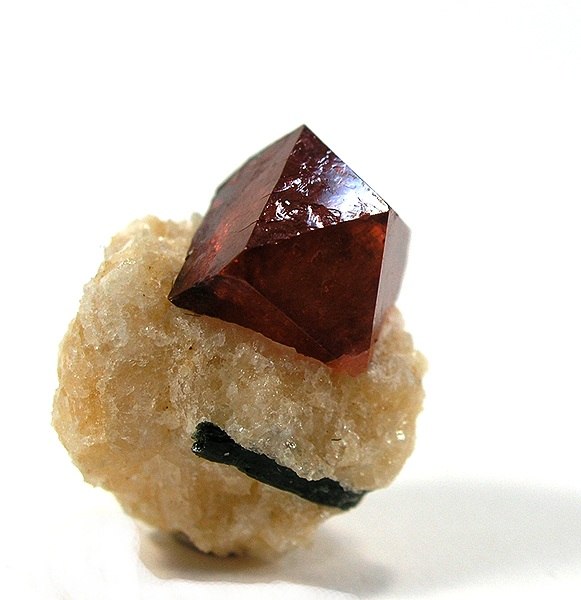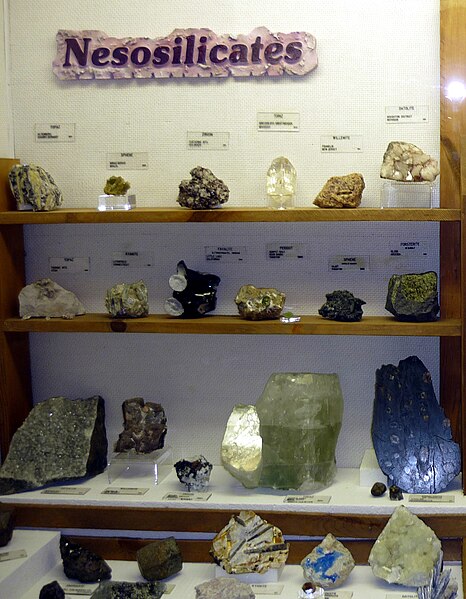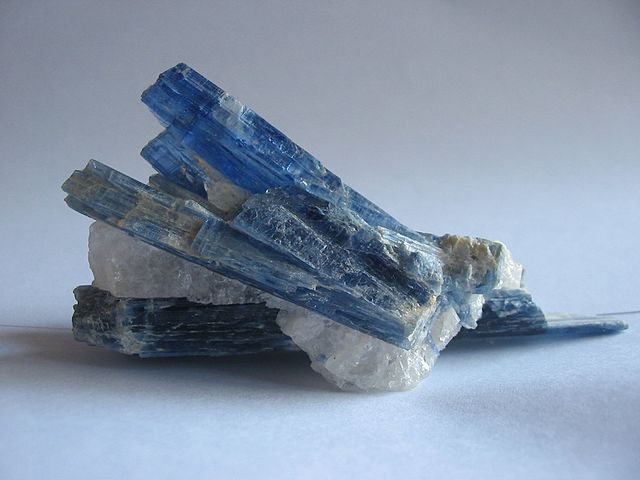Zircon is a mineral belonging to the group of nesosilicates and is a source of the metal zirconium. Its chemical name is zirconium(IV) silicate, and its corresponding chemical formula is ZrSiO4. An empirical formula showing some of the range of substitution in zircon is (Zr1–y, REEy)(SiO4)1–x(OH)4x–y. Zircon precipitates from silicate melts and has relatively high concentrations of high field strength incompatible elements. For example, hafnium is almost always present in quantities ranging from 1 to 4%. The crystal structure of zircon is tetragonal crystal system. The natural color of zircon varies between colorless, yellow-golden, red, brown, blue, and green.
A lustrous crystal of zircon perched on a tan matrix of calcite from the Gilgit District of Pakistan
Optical microscope photograph; the length of the crystal is about 250 µm
Sand-sized grains of zircon
A pale blue zircon gemstone weighing 3.36 carats
Silicate minerals are rock-forming minerals made up of silicate groups. They are the largest and most important class of minerals and make up approximately 90 percent of Earth's crust.
Lithium aluminium silicate mineral spodumene
Diatomaceous earth, a biogenic form of silica as viewed under a microscope. The imaged region measures approximately 1.13 by 0.69 mm.
Nesosilicate specimens at the Museum of Geology in South Dakota
Kyanite crystals (unknown scale)








